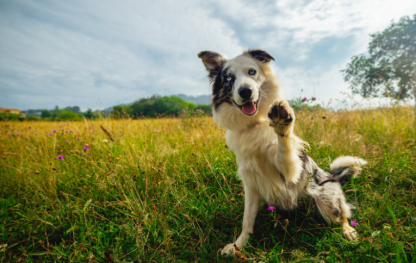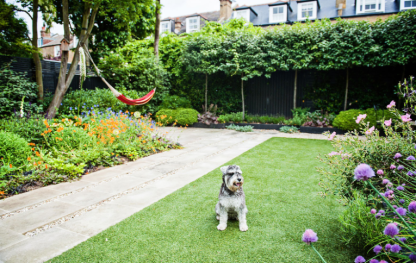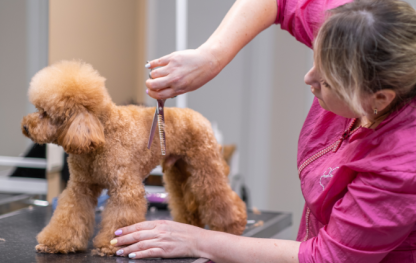The Role of Dog Walks in Managing Separation Anxiety
Separation anxiety is a common issue in dogs, causing stress, destructive behavior, excessive barking, and restlessness when left alone. Many pet owners struggle to find ways to help their anxious dogs feel calm and secure. One of the most effective and natural ways to manage separation anxiety is through daily walks.
Regular exercise, mental stimulation, and a structured routine all play a role in reducing anxiety and promoting relaxation. Here’s how incorporating daily walks into your dog’s routine can help manage separation anxiety.

1. Walks Provide Physical Exercise to Release Pent-Up Energy
A well-exercised dog is less likely to feel restless and anxious when left alone. Many dogs experience separation anxiety because they have excess energy with no outlet, leading to destructive behaviors like chewing furniture, scratching doors, or excessive barking.
How Walks Help:
- Walking before you leave helps tire out your dog, making them more likely to rest while you’re gone.
- Physical activity reduces nervous energy and promotes relaxation.
- Regular walks help regulate cortisol (stress hormone) levels, reducing overall anxiety.
Dogs that are physically and mentally engaged before being left alone often experience less separation-related distress.
2. Walking Creates a Predictable Routine
Dogs thrive on consistency and routine, and unpredictable schedules can contribute to anxiety. Establishing a daily walking schedule helps provide structure and reassurance, making your dog feel more secure.
How Walks Help:
- A set routine reduces uncertainty and stress about when you’ll return.
- Predictability helps create a sense of safety, making alone time less distressing.
- A post-walk relaxation period teaches dogs that separation follows a positive experience.
By walking your dog before leaving, you establish a calming pre-departure routine that helps them transition into alone time more easily.
3. Walks Provide Mental Stimulation to Prevent Boredom
A dog’s brain needs engagement and challenges, just like their body needs exercise. Boredom is a major trigger for separation anxiety, and daily walks stimulate their senses by exposing them to new environments, smells, and social interactions.
How Walks Help:
- Sniffing and exploring activate a dog’s problem-solving skills and curiosity.
- Exposure to different sights and sounds reduces anxiety triggers.
- Mental engagement prevents destructive behaviors that stem from boredom and stress.
Incorporating sniff walks, obedience training, or agility exercises during walks can provide even greater mental enrichment.

4. Walks Help Reduce Hyperactivity and Stress
Hyperactive dogs often struggle with self-regulation, making separation anxiety more intense. Walking helps channel that energy into a productive activity, reducing the likelihood of excessive pacing, whining, or panic behaviors when left alone.
How Walks Help:
- Dogs return home calmer and more relaxed after exercise.
- Reducing hyperactivity lowers stress levels, making them less anxious.
- A calm dog is more likely to settle into independent play or rest while alone.
For high-energy breeds, adding jogging, hiking, or interactive games to walks can provide even more stress relief.
5. Socialization on Walks Builds Confidence
Dogs with separation anxiety often lack confidence, making them more dependent on their owners for reassurance. Walking exposes them to new environments, people, and other dogs, helping build independence and resilience.
How Walks Help:
- Social exposure boosts confidence, making dogs more adaptable to change.
- Interaction with other dogs and people reduces clingy behavior.
- Dogs learn to handle minor stressors better, making separation easier.
Building confidence through positive social experiences helps reduce fear-based anxiety over time.
6. Walking Before Leaving Creates a Relaxation Effect
A well-structured walk can act as a natural calming tool. Dogs experience endorphin release (happy hormones) after exercise, making them feel relaxed and at ease.
How Walks Help:
- A tired dog is more likely to rest instead of panic when alone.
- Endorphins create a positive mood shift, reducing stress.
- Physical exertion makes dogs sleepier and less anxious post-walk.
Pairing a long walk with a rewarding activity (like a food puzzle or chew toy) after returning home reinforces relaxation.
How to Use Walks to Ease Separation Anxiety
If your dog struggles with separation anxiety, consistently using walks as part of a training strategy can help.
Tips for Effective Walks:
- Walk your dog 30-60 minutes before leaving to tire them out.
- Make departures low-key—don’t excite them right before leaving.
- Provide enrichment (puzzle toys, safe chews) after the walk to keep them busy.
- Gradually increase alone time after post-walk relaxation.
- Use praise and rewards for calm behavior to reinforce independence.
With time, your dog will associate your departure with a calm, positive experience.
Final Thoughts
Daily walks are a powerful tool for managing separation anxiety. They provide exercise, structure, mental stimulation, confidence-building, and stress relief, helping dogs stay relaxed and balanced when left alone.
If your dog struggles with anxiety, try incorporating a consistent walking routine and see how it improves their ability to stay calm and independent.
By making walks a key part of their daily routine, you’ll not only reduce separation-related stress but also strengthen your bond and improve your dog’s overall well-being.





